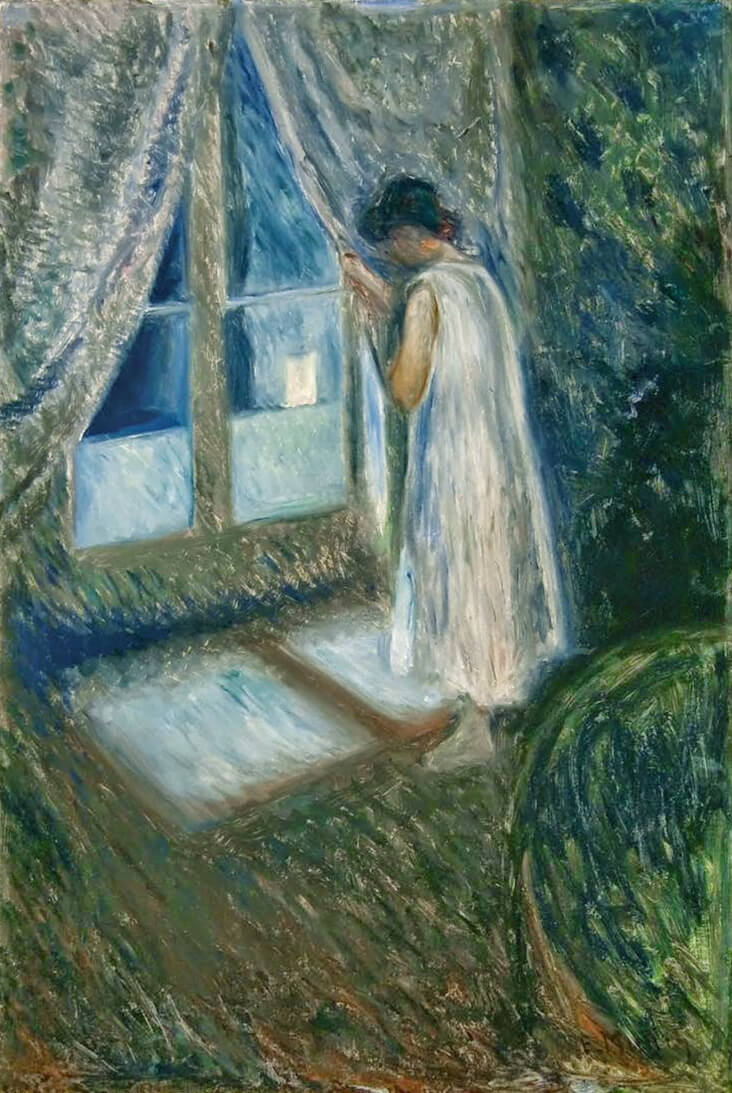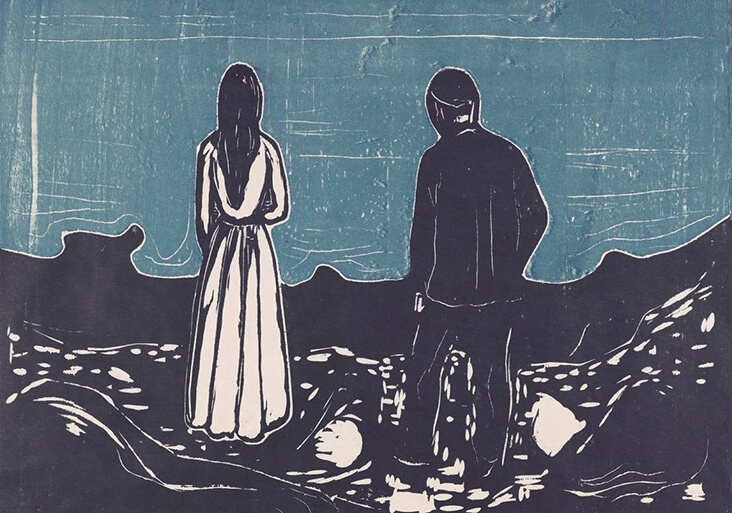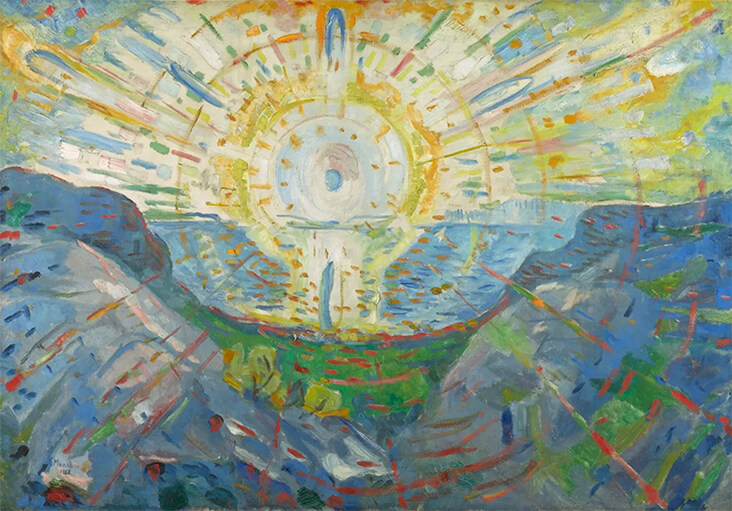FS Colour Series: Blue Bonnet inspired by Edvard Munch’s Spirit of Change
The cold, blue silence of BLUE BONNET Linen hovers like a thick mist through Edvard Munch’s paintings, investing his artworks with a mysterious, pervading ennui. Munch’s Expressionist and Symbolist drawings, paintings and prints captured the changing spirit of the early 20th century, when dramatic intellectual and industrial changes tore apart traditional Victorian values and replaced them with a brave, experimental avant-garde. Quiet, understated blues allowed Munch to convey this shadowy world of the unknown, so filled with anticipation and intrigue, as his solemn figures gaze hopefully and fearfully towards the future.
The troubled nature of Munch’s childhood undoubtedly shaped his future art. Born in the Norwegian village of Adalsbruk, his family later moved to Oslo to settle for a longer spell. When he was just five years old, his mother died of tuberculosis, followed not long after by his older sister. Uncertainties about the brevity of life haunted him, but he found an escape through reading the gothic stories of Edgar Allen Poe and by making his own drawings.
As a young art student in Oslo, Munch became associated with a group known as the Kristiana-Boheme, who believed in free-love and self-expression, an ethos that would remain with him throughout his life. The leader of the group, writer and philosopher Hans Jaeger, had a particularly profound influence on Munch, encouraging him to draw on personal experience and emotions to influence his art.
In the 1880s, many of Munch’s paintings made direct reference to his troubled childhood. Bt during visits to Paris between 1889 and 1893, Munch came into contact with the French Symbolists, whose quiet, symbolic mystery often centred around the blue light of dusk, and Munch was determined to invest this same enigmatic quality into his own art. A subject he centred on during this time was the lone figure near an open window, as a symbol of imminent change, as seen in The Girl by the Window, 1893. Golden, glowing moonlight punctuates the darkness of the scene, transforming the black of night into dreamy shades of teal blue, as a ghostly girl hovers with bristling trepidation.
Made a year earlier, Munch’s entrancing landscape scene in Mystery of a Summer Night, 1892 has the same vibrating hum of anticipation, as a blood-orange sunset spills onto darkening, denim-blue water, made deep and shadowy against the camel and green tones of the rugged foreground. It is significant that the sun and its’ reflection form a letter “i”, as Munch’s moody, atmospheric scene becomes an existential contemplation of I, the individual, and their isolated place in a changing world. In Starry Night, 1893, the same green-tinged blue dominates, smeared in slippery streaks that transmute from moonlit tones into deep, shadowy darkness, mingling with emerald green and aubergine purple. Overhead, stars twinkle with glistening excitement, as if predicting something to come.
Another recurring motif in Munch’s art is two figures, male and female, seen from behind, standing slightly apart. In Munch’s stark, cool settings, these introspective figures seem to contemplate their changing roles as Victoriana and family values make way for free-spirited bohemia. In both the painting Two Human Beings, 1905 and the woodblock print Two People: The Lonely Ones, 1899, richly toned and textured, dark-turqoise water becomes a metaphor for the journey into the unforeseen future, carrying with it a spirit of burgeoning adventure.
Munch also returned again and again to the subject of self-portraiture, often portraying his own feelings of anxiety or trepidation about the meaning and purpose of life. Self Portrait with Hands in Pockets, 1926 is a bristling patchwork of oceanic blues, catching the sunlight on his shoulders and the windows beyond, before falling into dense shades of navy. Painted in vivid shades of burnt orange and flesh pink, the artist’s face and slither of hand form a high contrast with an otherwise all-encompassing sea of blue, drawing our attention to Munch’s recurring quest; to find the individual’s place in the hazy blue, great unknown.







































One Comment
Susan Wilson
Always love your articles Rosie! So articulate and thought provoking. I almost always do further investigating on my own which is the joy of learning. Your synthesis of the artist’s life experience and how it translates to their use of color is something I really enjoy. Color has a special place in my life, as it does for all those who appreciate the visual world in nature and through human representation throughout history. So thank you!